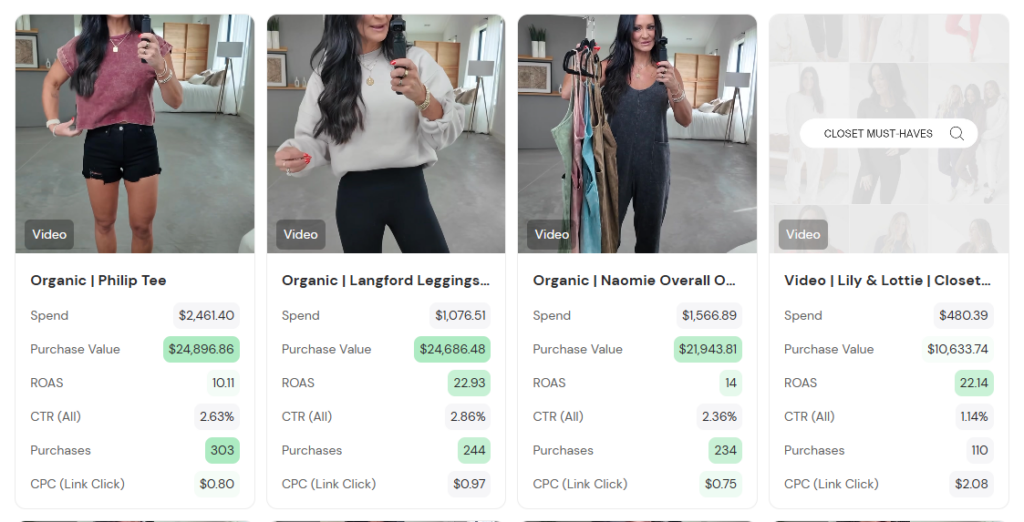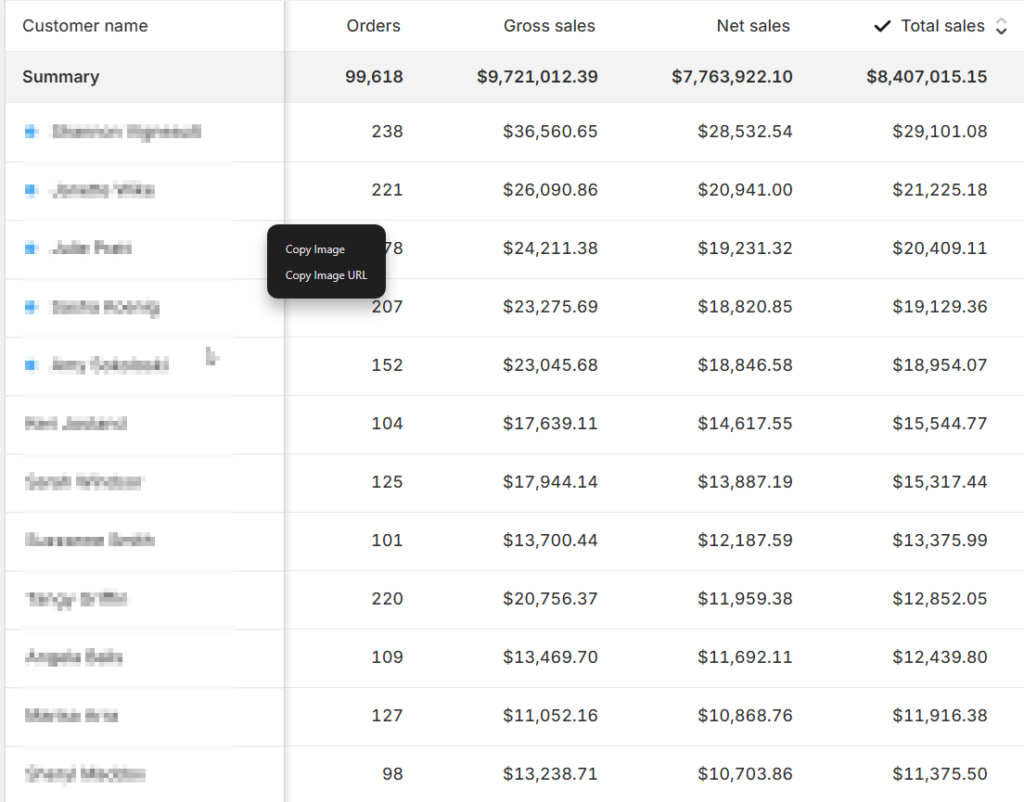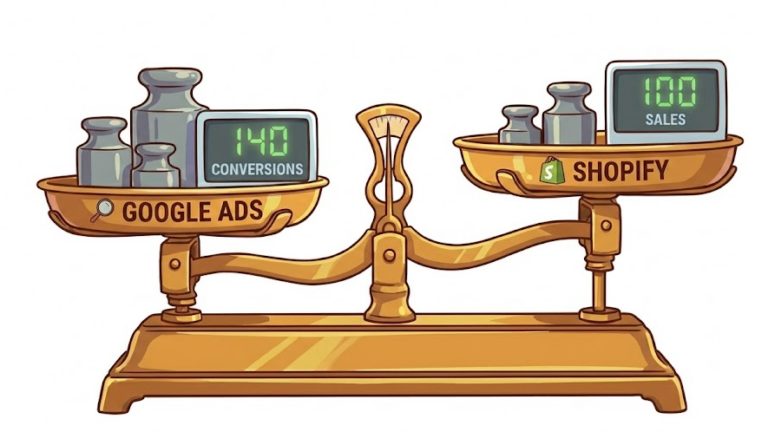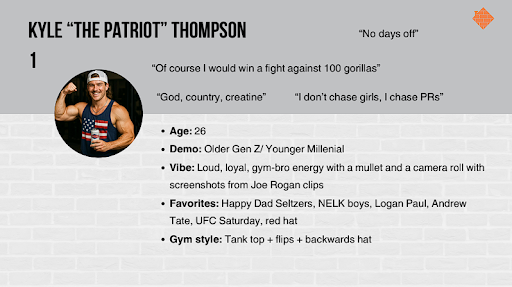
One of the best “secrets” to creating ads that beat your ROAS goals, is not starting with ads at all. Start with Organic content that is engaging, educational and entertaining.
Test this content for free on your organic social channels. If it performs well, then start putting money behind it and run it as ads.
It’s 2025, your customers are paying an extra $3/mo for Ad-Free Amazon Prime, $14 for YouTube Premium, and $7 more for No Ads Hulu. You don’t want to watch ads. Nobody wants to watch your ads either.
At the same time, we’re all gladly spending 2-4 hours per day watching organic social media content.
Key Takeaways/TLDR
- Start every campaign with organic content (it’s free audience testing).
- Use paid to scale only what’s proven to connect.
- Measure more than clicks. Look for comments, saves, shares, and loyalty.
- Build content that makes people care, not just click.
So, should you make organic content or ads?
Organic content outperforms ads every time. But there’s one problem. With organic content, you have no control over the almighty algorithm. That means you have no control over how many customers you can reach.
Ads give you the control and the reach.
So, the question isn’t “Is organic content better than ads?” It’s…


How can I make ads that perform like organic content?
That’s exactly what we’re doing with Lauriebelles, an online boutique and the home of the Lilly & Lottie brand. And you can take a look at any of the ads on this page to get a sense of just how well it works.
Before we began this Organic First, Push to Paid ads strategy, their ads were clean, polished, product-forward, and looked like what you’d expect from any clothing store.

They aren’t bad ads. They just don’t feel like anything. There’s nothing for customers to connect with, no personality, no reason to stop scrolling.
And because they look like ads, they performed like ads. Lauriebelles’ campaigns consistently had decent impressions, average CTR, low engagement, and middle-of-the-road ROAS.
Organic Content-First Strategy For the Win

Instead of trying to fix the ads, we stopped making ads altogether.
We started with organic content like try-ons (the kind of content customers were already happily watching on social media) but we didn’t go out and hire some UGC influencer.
There’s no substitute for a real voice and a real personality, especially that voice and personality belong to the buyer and owner of the brand.

When Laurie talks about “shirts that just arrived a few minutes ago” and leggings that she’s “so excited to have back in stock,” it feels like your friend showing you things she actually loves.
It definitely doesn’t feel like an ad.
That authenticity is the whole point. Because when people connect with a person (not a logo) they listen longer, engage more, and buy faster.
Every post starts as an organic post. If a video gets comments, saves, or DMs, that’s our signal. We take that exact clip, and push it to paid.
Results That Blow Traditional Ads Away
For fashion brands advertising on Meta during summer 2025, the median ROAS was about 2.67 ($2.67 in revenue for every $1 in ad spend). Lauribelles best performing traditional ads would be double that.

These aren’t one off wins either. The average (mean) ROAS across 29 ads is 12.98. The median is 14.04.
This is what happens when every ad is built on top of content people already love.
And it gets better. This approach doesn’t just make video ads perform better, it makes all campaigns perform better.
How does organic content impact ads?
The “traditional-looking” ads are getting stronger results too.



Why does organic content improve traditional ad performance? Because once the audience connects with your story, everything else you show them works harder.
Organic Content Builds Connection that Compounds
This is the part that gets missed when people talk about ad strategy:
Organic-first content doesn’t just drive better ROAS. It drives loyalty that can turn the right customers into superfans.
The items Lauribelles sells are really affordable. I’d guess the average item price is in the $60-$80 range, and that makes this next stat even more impressive:
Their top 12 customers have placed more than 1,700 orders and spent nearly a quarter of a million dollars. How’s that for Lifetime Value (LTV) and retention?

That kind of loyalty only comes from showing up consistently, building community, and making customers feel a connection.
FAQs
What is an organic-first ad strategy?
An organic-first ad strategy means posting content organically first, tracking engagement, and only turning top-performing posts into paid ads.
Why does organic content outperform traditional ads?
Organic content feels authentic and relatable. Customers connect with real people, not overly polished brand imagery, leading to higher engagement and ROAS.
Should I still run paid ads if my organic posts perform well?
Yes. Organic builds trust and connection, while paid ads give you reach and scalability. The two work best together.
How do I know which organic posts to turn into ads?
Look for engagement signals—comments, saves, DMs, and shares. These indicate emotional connection and make for the strongest paid content.
Does this strategy work for all brands?
Nearly any brand can apply it. It’s most effective when real team members or founders appear on camera instead of influencers.
What kind of ROI can I expect from an organic-first approach?
Results vary, but Lauriebelles achieved an average 12.98x ROAS compared to a fashion industry median of just 2.67x.
Do I need influencers for this to work?
No. Authentic brand voices outperform influencer partnerships because customers value genuine connection over production value.
How often should I test organic content?
Post consistently. Every organic post doubles as a free test to find content that resonates before investing ad spend.
How do I start?
Post more, watch what hits, then scale what works. Or, talk to a strategist.






no replies